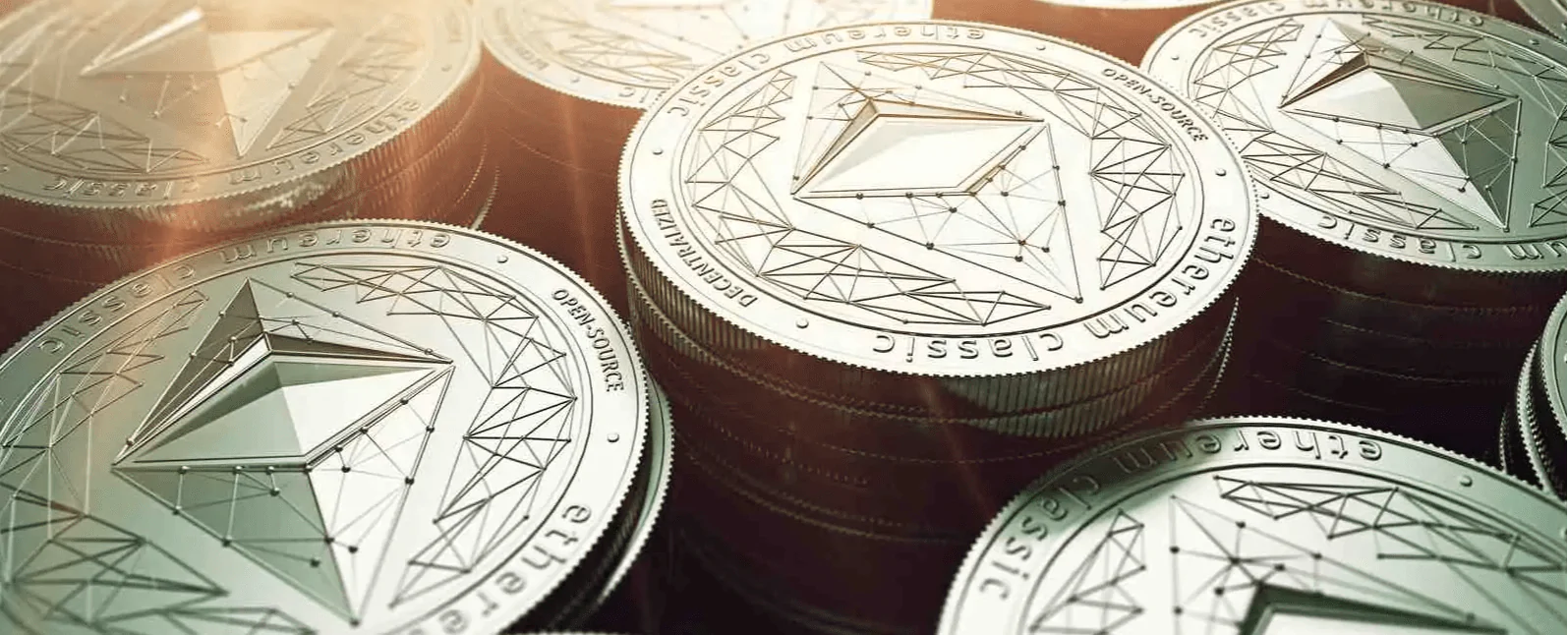Greece has made significant efforts to adopt a tax policy on crypto assets as the use of cryptocurrencies grows globally. In January 2025, the Greek government introduced new tax regulations for cryptocurrency transactions.
30.05.2022

What is Ethereum Classic (ETC)?
The general concept of what Ethereum Classic is actually begins with Ethereum. Let’s look at this relationship between the two cryptocurrencies.
Initially, the Ethereum blockchain was created as one indivisible network, transactions in such a network were easier and faster. This network very quickly gained the trust of many crypto owners, besides, many developers began to use the Ethereum platform to issue their tokens.
The DAO is one of the successful ICO projects, acting as a decentralized venture fund, entrusted with its assets not only by small investors, but also by major players on the market. In a fairly short period, DAO has accumulated over 11 million ETH, about 18,000 people have become investors. But something happened that should have happened and from which the history of Ethereum Classic actually began: hackers found a smart contract error in the DAO program code. Due to this error, a third of all ETH assets, with a total value of 50 million US dollars, were withdrawn from the network.
Ethereum leaders thought for a long time how to solve this unpleasant situation, how to return the invested funds to investors. They found the solution to this problem in the reversal of the Ethereum blockchain. Some of the affected investors were still against it and were afraid that the security of the blockchain chain would suffer from this. But a poll was conducted and about 97% voted for the changes. Due to the split of opinions, there was also a division within the network, thus Ethereum and Ethereum Classic appeared. According to the results of this division, the capital of each investor has doubled, so many of the investors work simultaneously with two sites, seeing their potentials in them.
Therefore, we can say that Ethereum Classic is a decentralized cryptoplatform that has an open source code. It was created by hacking The DAO smart contract that ran on the Ethereum blockchain.
Who created Ethereum Classic?
Ethereum Classic begins its history with the name Vitalik Buterin, who has been building his career in the crypto world from the foundation of the well-known Bitcoin Magazine.
The idea of creating the Ethereum Classic network begins at the end of 2013, and on July 30, 2015, the network was 100% ready and put into operation. It immediately found supporters and gained the trust of many large investors.
Work on the project is carried out by several teams that do not depend on each other in any way. Other words, there is no control center in Ethereum Classic. Each of the development teams has its own area of responsibility. Among these commands , the following can be distinguished:
- Ethereum Commonwealth — working on the Callisto Network testnet, the Classic Ether Wallet, ECNS and DexNS name services, and a system for sending messages to addresses between networks;
- ETC Dev is a team of developers, marketers and analysts from around the world whose job is to develop Geth Classic in the Go programming language, mainly involved in network updates;
- IOHK — the team consists of programmers, managers and analytical staff; are engaged in the development and promotion of the Mantis client node, work in the Scala language;
- ETC Cooperative — marketers involved in the development of promotion strategies, PR and public relations;
- ETC Labs — the controlling link of the company, manages all financial matters and monitors the work of the company's representative offices in the USA and Singapore;
- EthCore is a team that is working on the Parity client in the Rust programming language.
Nevertheless, although Vitalik Buterin is considered to be the main ideologist and creator, Barry Silbert, who manages the Digital Currency Group, played a huge role in the development of the project. At the same time, Buterin does not renounce Ethereum Classic and speaks about it only in a positive way
Advantages and disadvantages of ETC
Despite the fact that Ethereum Classic appeared as a result of the division of Ethereum, it would seem that they should have identical sets of advantages and disadvantages, but this is far from the case. Let us then consider these characteristics in more detail.
Advantages:
- Full decentralization of the network and freedom of choice of the market
- Open source code
- A fixed number of coins, which guarantees the continued demand for the coin, as well as protects it from full inflation
- Growing community, including the support of influential members of the crypto community such as Charles Hoskinson and Gavin Wood
- Availability of exchange — ETC can be exchanged on a variety of platforms without first converting to bitcoin
- Affordable mining that does not require large capacities and special equipment
- The principle of the supremacy of the code
- Transactions for the purchase and sale of ETC are carried out quickly and many times faster than with the first ether.
Disadvantages:
- Vulnerability to attack 51%
- Scalability Issues
- Reputation affected by hacker attacks and fraudulent schemes
- Market manipulation — Pump and Dump speculation
- Competition among other crypto coins — course, development team, etc.
- No developed infrastructure
- No access to the latest Ethereum updates
Ethereum Classic & Ethereum
After the Ethereum platform was divided into 2 platforms, many began to think about whether there are any distinguishing characteristics between these networks at all.
- Blockchain. We can say that it is identical. The first block chains of Ethereum Classic and Ethereum are exactly the same, until the moment of the hard fork, which was carried out as a result of the hack. Starting from block number 192,000, there are some divergences.
- Working mechanism. The process of launching decentralized applications in both systems occurs by turning on their own digital machine.
- Area of use. Here, ETC and ETH play exactly the same roles, providing the opportunity to buy other assets and smart contracts for ether coins and ethereum classic.
- Flexibility to changes in blockchains. In Ethereum, if necessary, you can make some adjustments to the blockchain. This decision can be made by community vote. If the majority votes positively, then the adopted change will be recorded in the register. There is no such possibility in Ethereum Classic.
- Capitalization. When writing this text, the market capitalization of Ethereum has reached $249.08 billion, the trading volume is $34.48 billion; in Ethereum Classic, the capitalization is $2.78 billion, the trading volume in the last 24 hours is $621.53 million.
- Modernization and development. The initial ETH tried to attract more developers to the project, which eventually exceeded the number of community members themselves at some points. At the same time, for ETC, the number is not important, for them, the security of launching the application is of primary importance.
- Speculative nature. Ethereum Classic is a rather speculative asset than Ethereum; investors themselves often conduct trades.
- Course. The price of one ETH coin is hundreds of times higher than the cost of ETC. At the time of writing this article, the Ethereum exchange rate is 2,062.61 US dollars, Ethereum classic is 20.63 US dollars.
- Mining. Ethereum classic mining does not require large expenses and power, as for Ethereum mining.
Mining
Ethereum Classic mining is possible and it is not particularly different from mining any other cryptocurrency. And there is a lot of competition here, because for ETC mining you do not need to spend as much effort and energy as, for example, for the same Bitcoin or Ethereum.
For their work, miners receive a reward, which is paid in Ethereum Classic coins. The rewards themselves appear as a result of charging commissions from users performing exchange transactions with ETC, or when using its blockchain.
The total offer of Ethereum classic is 210.7 million ETC.At the time of writing this article, 63.95% has already been mined, that is, the circulating supply is now equal to 134.75 million ETC. After the last coin is mined, no new Ethereum Classic will be issued, but miners will continue to receive their rewards, in the form of commissions from buying or selling ETC.
The operation of Ethereum Classic is based on the Dagger-Hashimoto (Ethash) algorithm. AMD and Nvidia video cards (GPUs) for 3-4 GB and above, as well as special Asics are suitable for mining.
For those who do not want to mine alone, or have a desire, but do not have great opportunities, you can join one of the pools (combining miners into a single network): Ezil ETC + ZIL, Ezil, Nanopool, 2miners, Mining Pool Hub, Prohashing, AikaPool, F2Pool, BaikalMine, Clona Network, CrazyPool, Cruxpool and others.
To date, the mining of a new Ethereum Classic block is 13.13 seconds, and the reward is $53.35 or 2.56 ETC.
How to buy Ethereum Classic?
You can buy ETC cryptocurrency on most well-known cryptocurrency exchanges or crypto exchangers. But before purchasing, you should still decide on the ultimate goal of such a purchase — the desire to invest and trade this coin or make exchange transactions. In the first case, crypto exchange services are more suitable for you. The most popular are: Bitfinex, Binance, Okex, Bitforex, Coinbase, Kraken, etc. For those who want to exchange cryptocurrencies for fiat money or other cryptocurrencies, a more efficient and faster option would be to use the services of an online exchanger, for example, Buycoin.online. We work fully automatically, without breaks and days off, we guarantee the execution of applications, we offer the most favorable rates of world exchanges.
Where to store ETC cryptocurrency?
After purchasing a cryptocurrency, it is important to understand where and how securely it can be stored. To do this, there are many types of various wallets — desktop, mobile, gadget wallets and even paper media.
The following wallets are popular among Ethereum Classic owners:
- Ethecore Parity is a separate version of the wallet specifically for Ethereum Classic. It was designed by Gavin Wood and his team. The wallet supports both coins — ether and ethereum classic.
- Classic Ether Wallet is a fork project of the popular MyEtherWallet, so its main functions converge with the initial version. You can log in via a browser or a mobile application.
- Mist — сreated by the Ethereum Foundation team, it supports Ethereum Classic.
- Ledger Nano S — many consider it to be the most reliable for storage, since it belongs to cold wallets, that is, fraudsters cannot access assets in any way.
- Jaxx — supports many cryptocurrencies, but experts do not advise using it in the long term, as there are problems with the possible restoration of the entrance. On such a wallet, you can keep small amounts that can be used for some daily expenses.
Forecasts and development prospects of the Ethereum Classic project
The development prospects for the growth of the Ethereum Classic cryptocurrency are very positive. Many cryptanalysts believe that the growth of the rate of any of the cryptocurrencies is largely influenced by the legislative framework of the countries of the world, that is, prohibitions or permits for free operations with cryptocurrencies in any area.
Since the beginning of the year, there have been sharp jumps in the ETC rate — from $49.69 at the end of March to $18.95 at the beginning of May. However, by the end of 2022, analysts predict an average exchange rate of $26.68. And in the nearest 2023 — approximately at the level of 39.15 US dollars, with a maximum mark of $44.41 by the end of the year.
Whether it will be so or not, we will be able to observe it ourselves in the short term.
But, of course, there is always a «BUT», which can greatly affect all kinds of forecasts. The rapid growth of ETC is possible, but on condition that the project developers decide to unfreeze the account of the hacker who stole a large share of the coins in 2016. The ETC community justifies this person and sees no wrongdoing behind him, so they expect the same decision from higher authorities. If everything goes like this, then hundreds of thousands of coins can get into circulation, if a hacker decides to sell them at one moment, the Ethereum Classic rate will collapse instantly.
Despite this, the miners do not stop and work hard to mine new coins, and the Ethereum Classic team continues to introduce new functionality for the coin.
By the end of May 2022, the Ethereum Classic DAO plans to launch the first ETC DeFi stack, which will be called ETC Swap. This will bring the network much closer to stable funding for open source code development.
And already in September 2022, Ethereum plans to switch to Proof-of-Stake. This will have a positive impact on ETC, strengthening the cryptocurrency as the largest Proof of Work EVM network. The security of the Ethereum Classic network will increase significantly as it rises above all derivatives of the Ethash mining algorithms.
We see that the Ethereum Classic ecosystem does not stop and develops organically, and independent project development teams and community members are interested in its progress and the development of a unique network. The Ethereum Classic platform remains decentralized, unchangeable and unstoppable.




